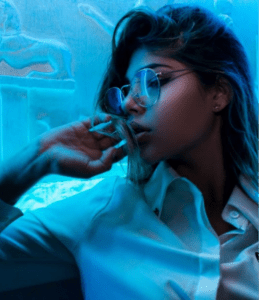Amelia Manera is a JD candidate at Osgoode Hall Law School.
On June 2, 2011, the US Patent & Trademark Office published a patent application made by Apple for infrared technology that would allow the disablement of picture and video recordings taken by devices such as the iPhone.
The patent was originally filed in 2009 by the inventors: Victor Tiscareno, Kevin Johnson, and Cindy Lawrence. The patent application was reported on here and a detailed description and explanation of the various potential functions of the proposed infrared technology can be found here.
Primarily, the infrared technology could be used to prevent the unauthorized recording of video and/or the taking of pictures by the camera on a cell phone, portable media player, or tablet. The system functions by enabling a device to detect an infrared signal that would be sent from a transmitter. The signal would carry instructions for the device to temporarily disable the camera as the content currently in view has not been authorized for recording. This type of disablement could also apply to museums or classified facilities where photos and recordings are not permitted.
Similarly, the infrared signal would enable institutions, such a museum, to send instructions through the signal to implant a watermark on any photos or video taken within the range of the signal. In this way, the institution can have their name appear across every photo taken of their facilities.
The signal could also provide information to tourists. While the technology may prevent picture-taking in a museum, it may also send information to be displayed on a person’s device. In this situation, a person would point their device at the object for which more information is desired and that person’s device would read the infrared signal and display the information about the object on the device. This type of application could exist anywhere a signal could be transmitted and could offer information about architecture, heritage buildings, subway stations, etc.
In addition, it was suggested that the infrared signal could be applied in a retail setting. Customers could use their devices to read the infrared signal being emitted from a tag on a piece of merchandise and receive information regarding size, price, inventory stock, etc.
As a practicality, devices that would include the infrared technology would also have operational controls so that the owner could determine when and for what purposes the device would read and display received information. The only exception being the temporary disablement of the camera function to prevent the violation of intellectual property rights; this feature would be permanently enabled.


5 Responses
Very interesting blog. I suspect this technology will be greeted with as much criticism as it will optimism. The critics will most likely emphasize the fact that this technology may potentially infringe on an individual’s privacy and freedom of choice. On the other hand, the technology will only “kick in” when an individual is about to violate intellectual property rights. So as long as you’re not breaking the law, privacy should never be an issue.
One can almost compare this technology to the government placing speed limitation devices in vehicles. Since the highest speed limit in Ontario is 100 km/h, the technology will only effect those breaking the law and driving over the limit. The question then becomes, should a person’s privacy still be respected if they intend to break the law?
I definitely agree with Danny. The critics will especially respond negatively to the inability of users to control the temporary disablement of the camera function. But critics will have to keep in mind that there are a number of elements that need to come into play before their nightmares are realized. One significant element is Apple’s general approach to sharing iOS. Apple traditionally does not license out iOS for installation on third party hardware. Since the patent seems to be iOS specific, even if other hardware companies obtain a license to Apple’s infrared technology, they will not likely be able to make use of it without iOS. Thus, as long as other tech companies do not come up with a similar infrared technology, we will still have ways to get around Apple’s new invention: through the use of non-Apple products and traditional one purpose technology (e.g. video cameras, digital cameras etc).
Thank you for your comments, Danny and Satomi. You both bring up valid points.
I’d like to pose a question: in the battle between privacy rights and intellectual property rights, two rights seemingly at odds in this situation, should one ultimately prevail over the other? Or should it depend on the circumstances?
Interesting question, Amelia. Personally, I don’t think it’s a black and white situation as I’m tending to lean more towards “depending on the circumstances”.
Privacy rights, at first glance, should prevail. Individuals want their privacy and that should be respected; however, there is something to be said about violating intellectual property rights. I don’t think a right to privacy should extend to the point where we must respect one’s choice to break the law. Especially if it can be easily prevented with an infrared technology. To me this doesn’t seem to require a major invasion of privacy to be accomplished.
I feel that it would be an issue if Apple’s technology went one step further and kept a record of everything a user did with his or her iPhone. For example, the phone will make a note of every time a user attempted to take photographs at a concert. In this case that should be considered a violation of privacy. The technology should only prevent the user from recording the concert illegally, full stop. Any derivation thereof could potentially lead towards the path of the “slippery slope”.
I’m afraid I qualify as one of the critics, though not on privacy grounds. It’s the assertion that this will only affect people who are violating intellectual property rights that troubles me. The argument is basically the same one that gets brought up in the context of digital locks (since that’s essentially what this): deciding when intellectual property rights are being violated can be a complex issue that can’t be determined mechanically. Technology like this allows institutions (or particularly determined individuals) to sidestep that whole thorny mess and enforce the rights they WISH they had, rather than the rights they actually have. Technology like this can’t recognize when a picture is being taken for purposes that would qualify as fair dealing, for example. There may not even be an intellectual property issue involved – it’s easy to imagine situations where institutions might wish to prevent pictures being taken for reasons that have nothing to do with copyright, even when they have no legal basis to do so. My iPhone’s not going to know that it has a legal right to take the picture, it’s just going to know that it’s receiving a signal telling it not to.
However, as much as I think technology like this is a terrible idea, I’m not particularly worried about it either. As has already been noted in the comments, it requires the user’s device to cooperate. I would expect a massive public relations backlash the first time an iPhone refused to take a picture that the user had every right to take. I suspect Apple’s filing of this patent has more to do with the other, less inflammatory uses of the technology (optional watermarking, delivering information to user’s devices etc…).
Comments are closed.